1-(3-CHLOROPHENYL)-2-THIOUREA

1-(3-CHLOROPHENYL)-2-THIOUREA structure
|
Common Name | 1-(3-CHLOROPHENYL)-2-THIOUREA | ||
|---|---|---|---|---|
| CAS Number | 4947-89-1 | Molecular Weight | 186.66200 | |
| Density | 1.441g/cm3 | Boiling Point | 296.7ºC at 760mmHg | |
| Molecular Formula | C7H7ClN2S | Melting Point | 137-138 °C | |
| MSDS | N/A | Flash Point | 133.2ºC | |
| Name | 3-chlorophenylthiourea |
|---|---|
| Synonym | More Synonyms |
| Density | 1.441g/cm3 |
|---|---|
| Boiling Point | 296.7ºC at 760mmHg |
| Melting Point | 137-138 °C |
| Molecular Formula | C7H7ClN2S |
| Molecular Weight | 186.66200 |
| Flash Point | 133.2ºC |
| Exact Mass | 186.00200 |
| PSA | 70.14000 |
| LogP | 2.76880 |
| Index of Refraction | 1.727 |
| Storage condition | Poison room |
Synonym: Section 2 - COMPOSITION, INFORMATION ON INGREDIENTS
Risk Phrases: 28 36/37/38 Section 3 - HAZARDS IDENTIFICATION EMERGENCY OVERVIEW
Very toxic if swallowed. Irritating to eyes, respiratory system and skin. Potential Health Effects Eye: Causes eye irritation. Skin: Causes skin irritation. May be harmful if absorbed through the skin. Ingestion: May be fatal if swallowed. May cause irritation of the digestive tract. Inhalation: Causes respiratory tract irritation. May be harmful if inhaled. Chronic: Not available. Section 4 - FIRST AID MEASURES Eyes: Immediately flush eyes with plenty of water for at least 15 minutes, occasionally lifting the upper and lower eyelids. Get medical aid immediately. Skin: Get medical aid immediately. Immediately flush skin with plenty of water for at least 15 minutes while removing contaminated clothing and shoes. Ingestion: Get medical aid immediately. Wash mouth out with water. Inhalation: Get medical aid immediately. Remove from exposure and move to fresh air immediately. If not breathing, give artificial respiration. If breathing is difficult, give oxygen. Notes to Physician: Section 5 - FIRE FIGHTING MEASURES General Information: As in any fire, wear a self-contained breathing apparatus in pressure-demand, MSHA/NIOSH (approved or equivalent), and full protective gear. Extinguishing Media: Use water spray, dry chemical, carbon dioxide, or chemical foam. Section 6 - ACCIDENTAL RELEASE MEASURES General Information: Use proper personal protective equipment as indicated in Section 8. Spills/Leaks: Vacuum or sweep up material and place into a suitable disposal container. Section 7 - HANDLING and STORAGE Handling: Do not breathe dust, vapor, mist, or gas. Do not get in eyes, on skin, or on clothing. Use only in a chemical fume hood. Storage: Store in a cool, dry place. Store in a tightly closed container. Poison room locked. Section 8 - EXPOSURE CONTROLS, PERSONAL PROTECTION Engineering Controls: Facilities storing or utilizing this material should be equipped with an eyewash facility and a safety shower. Use adequate ventilation to keep airborne concentrations low. Exposure Limits CAS# 4947-89-1: Personal Protective Equipment Eyes: Not available. Skin: Wear appropriate protective gloves to prevent skin exposure. Clothing: Wear appropriate protective clothing to prevent skin exposure. Respirators: Follow the OSHA respirator regulations found in 29 CFR 1910.134 or European Standard EN 149. Use a NIOSH/MSHA or European Standard EN 149 approved respirator if exposure limits are exceeded or if irritation or other symptoms are experienced. Section 9 - PHYSICAL AND CHEMICAL PROPERTIES Physical State: Solid Color: cream Odor: Not available. pH: Not available. Vapor Pressure: Not available. Viscosity: Not available. Boiling Point: Not available. Freezing/Melting Point: 137 - 138 deg C Autoignition Temperature: Not available. Flash Point: Not available. Explosion Limits, lower: Not available. Explosion Limits, upper: Not available. Decomposition Temperature: Solubility in water: Insoluble. Specific Gravity/Density: Molecular Formula: C7H7ClN2S Molecular Weight: 186.67 Section 10 - STABILITY AND REACTIVITY Chemical Stability: Not available. Conditions to Avoid: Incompatible materials. Incompatibilities with Other Materials: Strong oxidizing agents. Hazardous Decomposition Products: Hydrogen chloride, carbon monoxide, oxides of nitrogen, oxides of sulfur, carbon dioxide. Hazardous Polymerization: Has not been reported Section 11 - TOXICOLOGICAL INFORMATION RTECS#: CAS# 4947-89-1: YS7000000 LD50/LC50: CAS# 4947-89-1: Oral, rat: LD50 = 25 mg/kg. Carcinogenicity: 1-(3-Chlorophenyl)-2-thiourea - Not listed by ACGIH, IARC, or NTP. Other: See actual entry in RTECS for complete information. Section 12 - ECOLOGICAL INFORMATION Section 13 - DISPOSAL CONSIDERATIONS Dispose of in a manner consistent with federal, state, and local regulations. Section 14 - TRANSPORT INFORMATION IATA Shipping Name: TOXIC SOLID, ORGANIC, N.O.S.* Hazard Class: 6.1 UN Number: 2811 Packing Group: II IMO Shipping Name: TOXIC SOLID, ORGANIC, N.O.S. Hazard Class: 6.1 UN Number: 2811 Packing Group: II RID/ADR Shipping Name: TOXIC SOLID, ORGANIC, N.O.S. Hazard Class: 6.1 UN Number: 2811 Packing group: II Section 15 - REGULATORY INFORMATION European/International Regulations European Labeling in Accordance with EC Directives Hazard Symbols: T+ Risk Phrases: R 28 Very toxic if swallowed. R 36/37/38 Irritating to eyes, respiratory system and skin. Safety Phrases: S 22 Do not breathe dust. S 28A After contact with skin, wash immediately with plenty of water. S 36/37/39 Wear suitable protective clothing, gloves and eye/face protection. S 45 In case of accident or if you feel unwell, seek medical advice immediately (show the label where possible). WGK (Water Danger/Protection) CAS# 4947-89-1: No information available. Canada None of the chemicals in this product are listed on the DSL/NDSL list. CAS# 4947-89-1 is not listed on Canada's Ingredient Disclosure List. US FEDERAL TSCA CAS# 4947-89-1 is not listed on the TSCA inventory. It is for research and development use only. SECTION 16 - ADDITIONAL INFORMATION N/A |
CHEMICAL IDENTIFICATION
HEALTH HAZARD DATAACUTE TOXICITY DATA
|
| Hazard Codes | T+: Very toxic;T: Toxic; |
|---|---|
| Risk Phrases | R28 |
| Safety Phrases | S45-S36/37/39-S28A-S22 |
| RIDADR | 2811 |
| RTECS | YS7000000 |
| Packaging Group | II |
| Hazard Class | 6.1 |
| HS Code | 2930909090 |
|
~88% 
1-(3-CHLOROPHEN... CAS#:4947-89-1 |
| Literature: GLAXOSMITHKLINE LLC; CHEUNG, Mui; TANGIRALA, Raghuram, S. Patent: WO2014/74761 A2, 2014 ; Location in patent: Page/Page column 58 ; |
|
~% 
1-(3-CHLOROPHEN... CAS#:4947-89-1 |
| Literature: THE BOARD OF TRUSTEES OF THE LELAND STANFORD JUNIOR UNIVERSITY; AUCKLAND UNISERVICES LIMITED Patent: WO2009/114552 A1, 2009 ; Location in patent: Page/Page column 86-87 ; |
|
~90% 
1-(3-CHLOROPHEN... CAS#:4947-89-1 |
| Literature: Rasmussen, C. R.; Villani, F. J.; Weaner, L. E.; Reynolds, B. E.; Hood, A. R.; et al. Synthesis, 1988 , # 6 p. 456 - 459 |
|
~% 
1-(3-CHLOROPHEN... CAS#:4947-89-1 |
| Literature: Karle, Michael; Knecht, Wolfgang; Xue, Yafeng Bioorganic and Medicinal Chemistry Letters, 2012 , vol. 22, # 14 p. 4839 - 4843 |
|
~% 
1-(3-CHLOROPHEN... CAS#:4947-89-1 |
| Literature: Yella, Ramesh; Kavala, Veerababurao; Patel, Bhisma K. Synthetic Communications, 2011 , vol. 41, # 6 p. 792 - 805 |
|
~% 
1-(3-CHLOROPHEN... CAS#:4947-89-1 |
| Literature: Shearer, Barry G.; Lee, Shuliang; Oplinger, Jeffrey A.; Frick, Lloyd W.; Garvey, Edward P.; Furfine, Eric S. Journal of Medicinal Chemistry, 1997 , vol. 40, # 12 p. 1901 - 1905 |
|
~90% 
1-(3-CHLOROPHEN... CAS#:4947-89-1 |
| Literature: Uberhande; Thakare; Berad Journal of the Indian Chemical Society, 2010 , vol. 87, # 9 p. 1137 - 1141 |
|
~% 
1-(3-CHLOROPHEN... CAS#:4947-89-1 |
| Literature: Fernandes; Ganapathi Proceedings - Indian Academy of Sciences, Section A, 1951 , vol. 33, p. 364,365 |
| Precursor 6 | |
|---|---|
| DownStream 10 | |
| HS Code | 2930909090 |
|---|---|
| Summary | 2930909090. other organo-sulphur compounds. VAT:17.0%. Tax rebate rate:13.0%. . MFN tariff:6.5%. General tariff:30.0% |
| 1-(3-CHLOROPHENYL)-2-THIOUREA |
| 1-(3-Chlorophenyl)thiourea |
| (3-chlorophenyl)thiourea |
| MFCD00022165 |
| N-(3-Chlorophenyl)thiourea |
| 3-Chlorophenylthiourea |

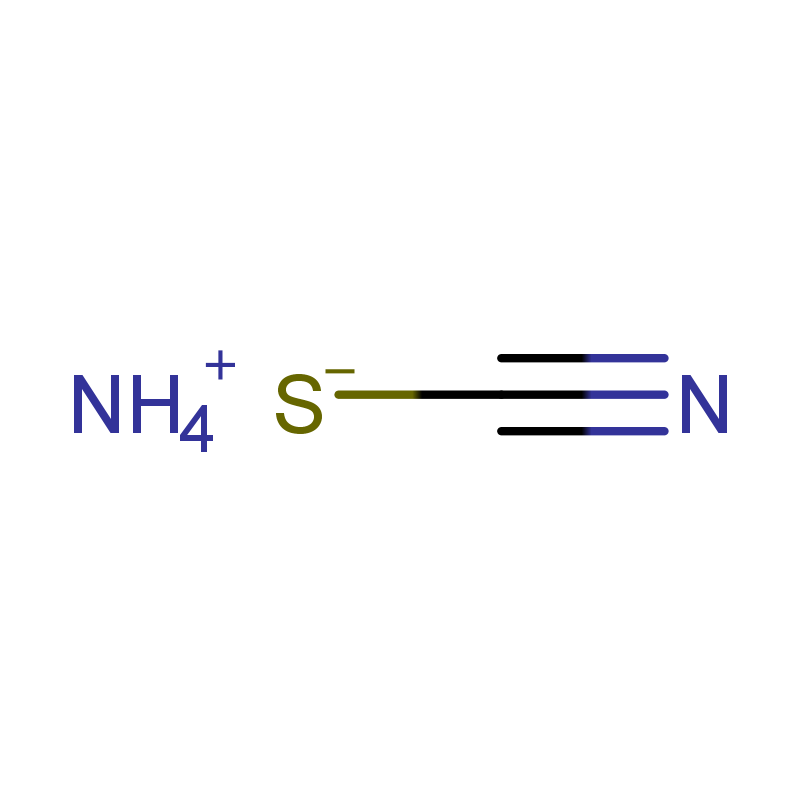
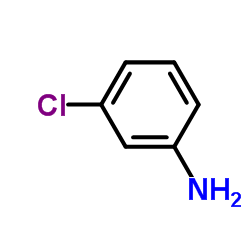



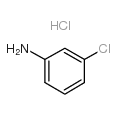
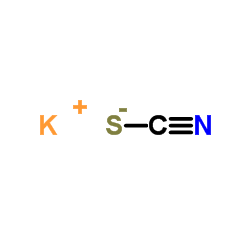
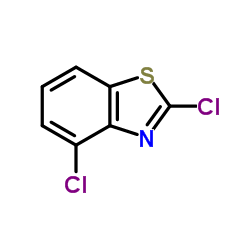 CAS#:3622-30-8
CAS#:3622-30-8 CAS#:32686-54-7
CAS#:32686-54-7 CAS#:1967-27-7
CAS#:1967-27-7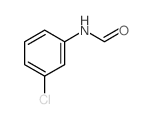 CAS#:139-71-9
CAS#:139-71-9 CAS#:16596-00-2
CAS#:16596-00-2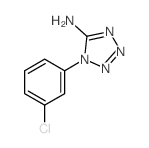 CAS#:14832-56-5
CAS#:14832-56-5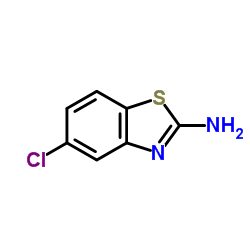 CAS#:20358-00-3
CAS#:20358-00-3![7-CHLOROBENZO[D]THIAZOL-2-AMINE structure](https://image.chemsrc.com/caspic/149/20358-01-4.png) CAS#:20358-01-4
CAS#:20358-01-4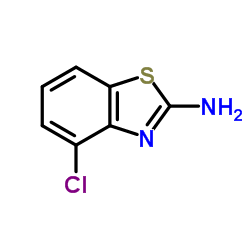 CAS#:19952-47-7
CAS#:19952-47-7
